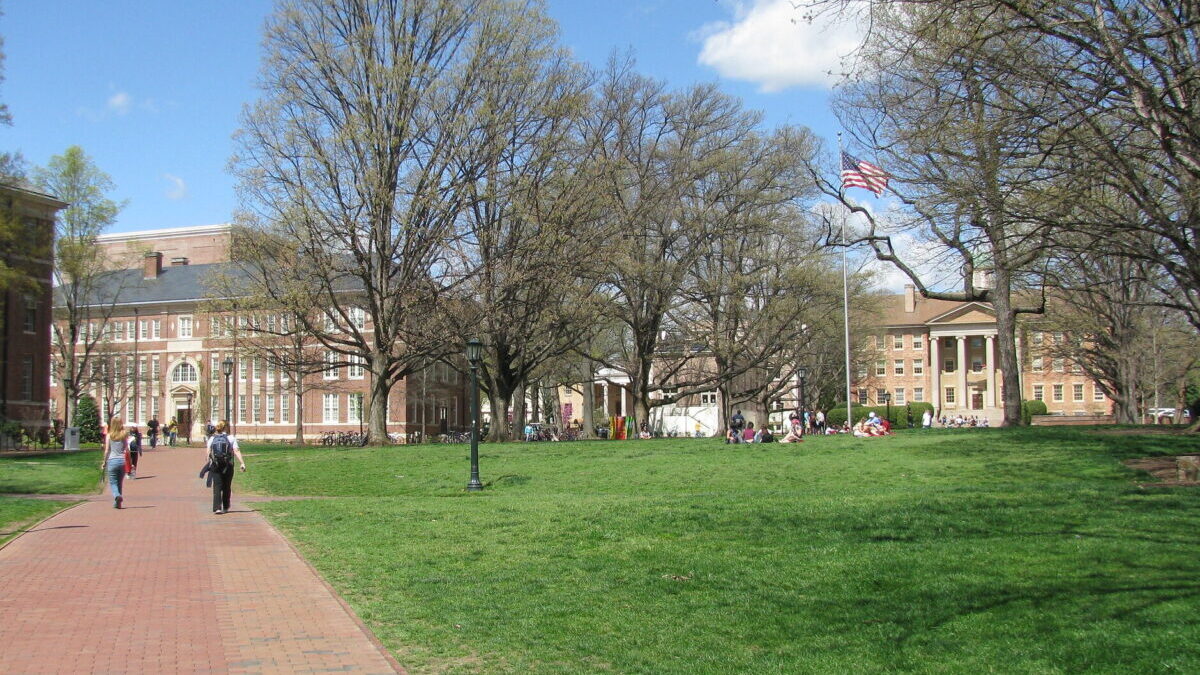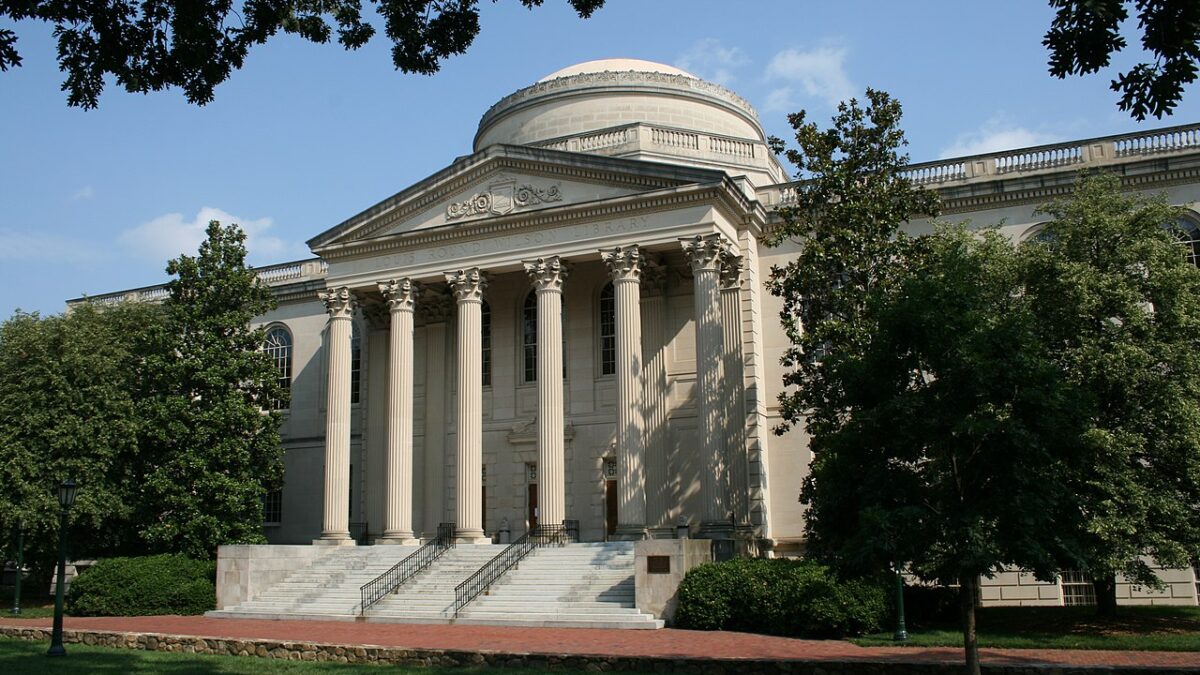The U.S. Supreme Court on Monday heard two cases challenging affirmative action-based admissions policies at the University of North Carolina (UNC) and Harvard University. The hearing was sometimes tense, and justices asked both sides tough questions. U.S. Solicitor General Elizabeth Prelogar and lawyers representing the two schools struggled to answer three key questions.
Students for Fair Admissions (SFFA), a group founded by activist Edward Blum, brought both lawsuits, alleging the race-based admissions policies at UNC and Harvard discriminate against white and Asian American applicants. Both schools and their defenders argued that “seeking the educational benefits of diversity is a compelling interest of the highest order and that universities may consider all aspects of an applicant’s background [including race] to build a thriving campus community.”
What Is Diversity?
When Justice Clarence Thomas asked Ryan Park, North Carolina’s solicitor general who defends UNC, what diversity is, Park had difficulty coming up with a clear and concise definition other than saying it is about a “broadly diverse set of criteria that extends to all different backgrounds and perspectives and not solely limited to race.” When Justice Brett Kavanaugh queried Park whether UNC would consider an applicant’s religion under his diversity definition, Park admitted that, unlike the race question, there is no box to check for one’s religion on the application form.
Harvard’s lawyer, Seth Waxman, also acknowledged that Harvard’s holistic admission process doesn’t consider an applicant’s religious beliefs. Park and Waxman have difficulty defining diversity because they know it is politically correct to speak of diversity in broad terms. But in practice, the schools they represent care about only one diversity aspect: racial quotas.
Justice Neil Gorsuch pressed Park: “How do you distinguish between what this court has said is impermissible, a quota, with what you argue should be permissible going forward, which is diversity. How can you do diversity without taking account of numbers?” Park wasn’t able to provide a satisfactory answer other than insisting that UNC achieves “diversity” by looking at the individual applicant through its holistic process, which includes race as one of many factors.
Gorsuch responded that diversity had been used “as a subterfuge for racial quotas” on college campuses. Prelogar, the U.S. solicitor general, proved Gorsuch was right when she warned the court that “a blanket ban on race-conscious admissions would cause racial diversity to plummet at many of our nation’s leading educational institutions.”
None of these diversity advocates were interested in discussing that college campuses, including at UNC and Harvard, lack intellectual and ideological diversity. For example, Harvard’s own survey shows that less than 2 percent of its faculty identifies as conservative. Alan Dershowitz, a professor emeritus at Harvard Law School, said in an interview that Harvard’s “emphasis on race and gender may well reduce academic diversity.”
Harvard is not diverse in many other ways too. Cameron Norris, attorney for SFFA, states that about “9 percent of incoming freshman at Harvard are conservatives. Harvard is 82 percent wealthy. There are 23 rich students for every one low-income student on campus.” Yet to those in charge of elite institutions like Harvard, none of these other diversity measures matter as long as they can demonstrate racial diversity on campuses.
What Are the Educational Benefits of Diversity?
Thomas drilled Park on the educational benefits of diversity. Unable to provide any quantifiable measures, Park focused on some qualitative “feel good” measures: “Diversity of all kinds leads to ‘a deeper and richer learning environment,’ leads to more creative thinking and exchange of ideas, and, critically, reduced bias between people of different backgrounds and not solely for racial backgrounds.”
Thomas clearly wasn’t satisfied with such an answer and told Park, “I didn’t go to racially diverse schools, but there were educational benefits.” Furthermore, Justice Thomas reminded Park that parents do not necessarily send their kids to college “to have fun or feel good or anything like that; they send them there to learn physics or chemistry or whatever they’re studying.”
After Thomas pressed Park again to explain the educational benefits of diversity, Park mentioned a study showing racially diverse groups make more efficient trading decisions. Thomas replied, “I don’t put much stock in that because I’ve heard similar arguments in favor of segregation too.”
Evidence shows that racial and gender quotas sometimes do not improve an organization’s performance. Not so long ago, Britain’s conservative Prime Minister Liz Truss won widespread praise for nominating the most diverse cabinet in the nation’s history. Yet, her most diverse cabinet was short-lived, lasting only 44 days due to flawed policies.
When Will Race-Conscious Admissions End?
The one question that defenders of Harvard and UNC struggled with most was when several justices, including Justices Amy Coney Barrett and Samuel Alito, asked when both schools’ race-based admissions would end: “When is your sunset? When will you know?”
In her majority opinion in Grutter v. Bollinger (2003), Justice Sandra Day O’Connor famously said that affirmative action in college admission is permissible but not in perpetuity, and “We expect that 25 years from now, the use of racial preferences will no longer be necessary to further the interest” in student body diversity. Almost 20 years have passed since Grutter, but none of the defenders of Harvard and UNC was willing to commit to a target date or a set of measures to end race-based admission policies.
Park sees no end because “the compelling interest in diversity” will never expire. Prelogar didn’t think Grutter provided a timetable. Instead, she believes the schools should consider race as part of their admission policies until they achieve “meaningful representation and meaningful diversity on those campuses.” But she couldn’t define “meaningful representation.” Waxman admitted that “Harvard does not currently, based on its data, expect that in 2028 it will have achieved — been able to use a — only race-neutral alternatives.”
Justice Kavanaugh asked, “if you don’t have something measurable, it’s going to be very hard for this court. If we’re called upon 10 years from now or 20 years from now, it’s going to be — you know, this is a bit of a replay of the Grutter argument, but if we come back to it, OK, are we there yet? What do we look at?” No one could offer him a clear answer. As Patrick Strawbridge, lawyer of SFFA, pointed out, at these schools, “There was no ever — there was no plan ever to consider sunsetting their use of race.”
Monday’s oral argument of these two cases revealed the fundamental objective of affirmative action supporters. They want affirmative action to remain perpetually. Under cover of vaguely defined “diversity,” they can get away with favoring some races while discriminating against other races consequence-free. They feel justified in their approach because they see America as systemically racist, and no comprise from the right will ever satisfy them.
Knowing this, the only right thing the Supreme Court should do now, in the words of The Wall Street Journal editorial board, is to uphold “America’s principle of equality under the law, by telling [supporters of affirmative action] their time is up.”









